FORT HOOD, Texas -- For children, a parent's deployment can be a scary time full of unknowns and uncertainties.
Feb. 12, about 200 Fort Hood children got a glimpse of what their parents experience when they deploy. During a day-long mock deployment at Comanche Chapel, children and youth ages 3-18 learned about Iraq and Afghanistan, went through a mock Soldier readiness processing where they received shots and eye examinations, tried on tactical gear, ate a Soldier-appropriate lunch, and went on a road march.
The exercise was an effort to help demystify the deployment process, explained Stephanie Mello, event coordinator, Fort Hood Army Community Service.
"We decided kids need to know it's their deployment too," Mello said.
To further the message, several Fort Hood and area agencies set up information tables inside Comanche Chapel and offered educational materials about dealing with deployments and the stress of Army life.
The event was an effort to alleviate fears and anxiety children often associate with a deployment and to answer some of their questions by showing children what their parents' experience is like.
"We did this so our kids don't have to be so afraid," Mello said.
The morning started at 8 a.m. with registration that included platoon assignments and equipment issue. Equipment issue included a backpack filled with a compass, an Operation Military Youth dog tag, a field journal, a pen, a disposable camera, a canteen and other items. The children also received badges with their name, rank and platoon assignment.
Once registered, children headed out to the parking lot of Comanche Chapel for their morning formation and a briefing from Fort Hood Soldiers.
In their platoon formations, children learned about the Warrior Ethos, to always place the mission first and never leave a fallen comrade. They also learned to say "Hooah" with appropriate inflection and gusto.
More than 80 Fort Hood Soldiers volunteered to make the mock deployment a success. For many, the day meant giving up time with their own families, but they were rewarded by helping military children.
"I volunteered because I have children of my own," said Sgt. Stanly Macauley, 3rd Battalion, 4th Aviation Regiment, 4th Combat Aviation Brigade. "It's nice for them to have an understanding of what we go through."
As the children were released from formation, the platoons headed off to the different activities.
India Platoon stayed in the parking lot to learn about some of the Army equipment Soldiers use on deployments.
Of several pieces of signal and communications equipment on display, the children most enjoyed the Humvee-mounted Avenger system. In front of the vehicles, Soldiers explained the difference between a rocket and a missile (a rocket only goes straight), and let the children move the Avenger system up and down and side-to-side.
After learning about the Army equipment, the young Soldiers entered Comanche Chapel for an in-country briefing about Iraq and Afghanistan.
Led by George Butry, mobilization and deployment specialist, Fort Hood Army Community Service, and an Iraqi native, the briefing taught the children the similarities and differences between American and Middle Eastern children, what Iraqis and Afghans eat, how to say thank you and hello in Iraqi Arabic, and offered some insight into the cultures of Iraq and Afghanistan.
During previous youth mock deployments, the in-country briefing focused on Iraq, but with Fort Hood's increasing deployments to Afghanistan, the piece on that country was added, Butry said.
The Iraqi woman, an ex-patriot who has lived here for four years and who spoke at the briefing, said it was a good opportunity for the military children to see that Iraqi children are a lot like them.
"It's a nice opportunity for them to understand what their Soldiers go through," she said. "This makes it easier for them to understand that we don't have tails and horns. It helps get rid of any misconceptions."
For their part, the children wanted to know about schools in Iraq and more about what their parents see when they are over there on deployment.
Butry helped answer the questions and got the children involved by asking questions to the crowd.
After the briefing, the children moved into a large room where they went through mock medical and dental checks similar to a Soldier's SRP, got their faces painted with camouflage grease paint and tried on the armor their parents wear during deployments and field exercises.
At the tactical gear table, Macauley helped the children try on Kevlar helmets and body armor. He said the day was a good way to introduce children of Soldiers to what their parents do every day.
"It gets kids interacting with the military," Macauley said. "They actually get to experience it here."
Jaylen Wright, 8, attended the mock deployment with his father, Capt. Torre White. Jaylen, who wants to follow in his father's footsteps and become a Soldier, wanted that experience Macauley mentioned.
"I want to see what (Soldiers) do when they deploy," he said. "It makes it easier."
Torre said the day was a great learning experience for military children.
"It's good for the kids to actually go through and see what parents will do," the captain said.
With crowded lines and a sense of "hurry up and wait" at times, children saw how stressful parts of a deployment can be.
"I think it's a lot tougher now than I thought before," Maren Cooper, 10, said. "I learned a lot."
The SRP stations were crowded and often confusing as the children tried to stay with their platoons while participating in all the station activities before moving on to the more physical aspects of the day.
Next up for the children was a little exercise as they tried a modified obstacle course. For many, the miniature crawl, hurdle, carry course was a favorite.
"This is really fun," Harley Crago, 11, said. "I got to do the obstacle course. It was my favorite."
After lunch the children rejoined their platoons and lined up for a road march around the adjacent Comanche Youth Center. The platoons marched single file and shouted cadences with their Soldier platoon leaders.
Following the road march, the youths were treated to a demonstration by Fort Hood's Military Working Dog Section. Rex, a German shepherd that serves as a patrol and explosives dog, and Toby, a black Labrador retriever that is a specialized search dog, and their handlers, showed what they do at home and on deployment.
On command, Rex charged after a Soldier in a bite suit. Toby's handler told the children about the dog's ability to isolate different scents and detect 22 explosives and known bomb-making components.
Although not really part of a Soldier's deployment, the working dog piece was presented because it was something the children wanted, Mello said.
After the presentation, the child Soldiers spent some time petting Rex and Toby and talking to their handlers.
The dog demonstration was the afternoon's last activity before the deployment was to end.
Unlike previous youth deployment activities, this one ended differently.
"We added the reunion piece for this one," Mello said.
The day ended the same as every deployment does. Parents and siblings made "welcome home" signs and assembled, cameras ready, in the parking lot of the chapel. The children ran outside to the cheers and flashbulbs of their parents and filed into their final formations in the parking lot, where the day began.
Even though this was the "shortest deployment ever," as Butry told the children, like every other deployment, the day changed these little Soldiers. They had gained new knowledge and perspective about a deployment and what their parents go through when they deploy. And they had lost a lot of the fear.
"I think it's really cool," Crago said. "I feel like I know more now."
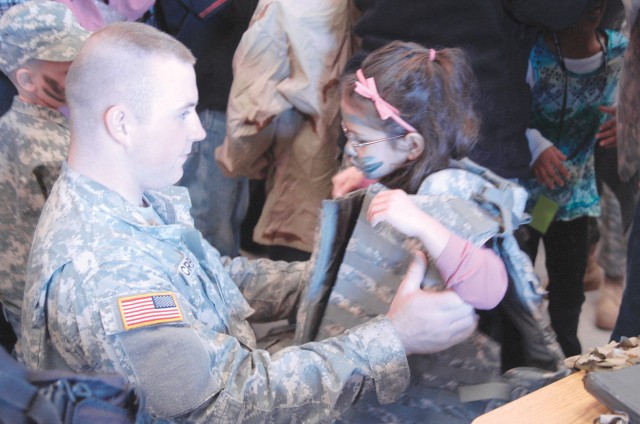

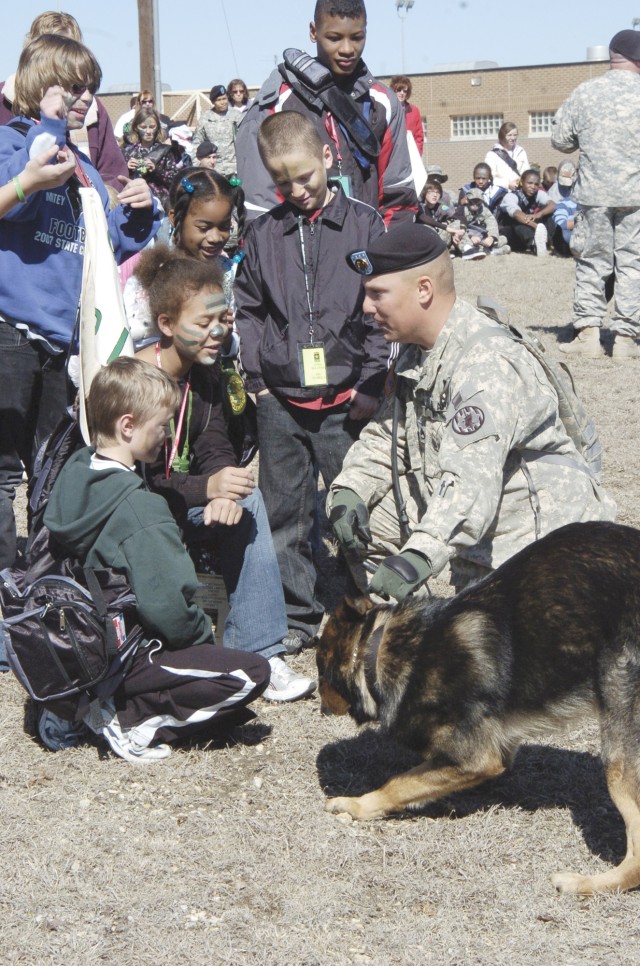
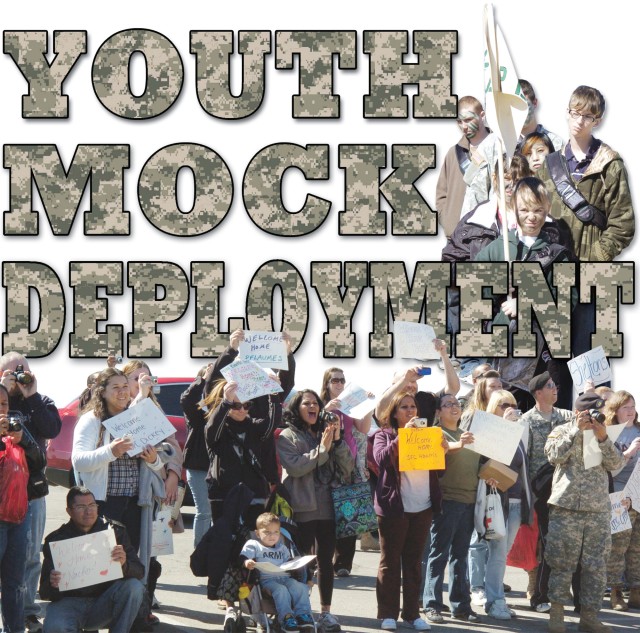
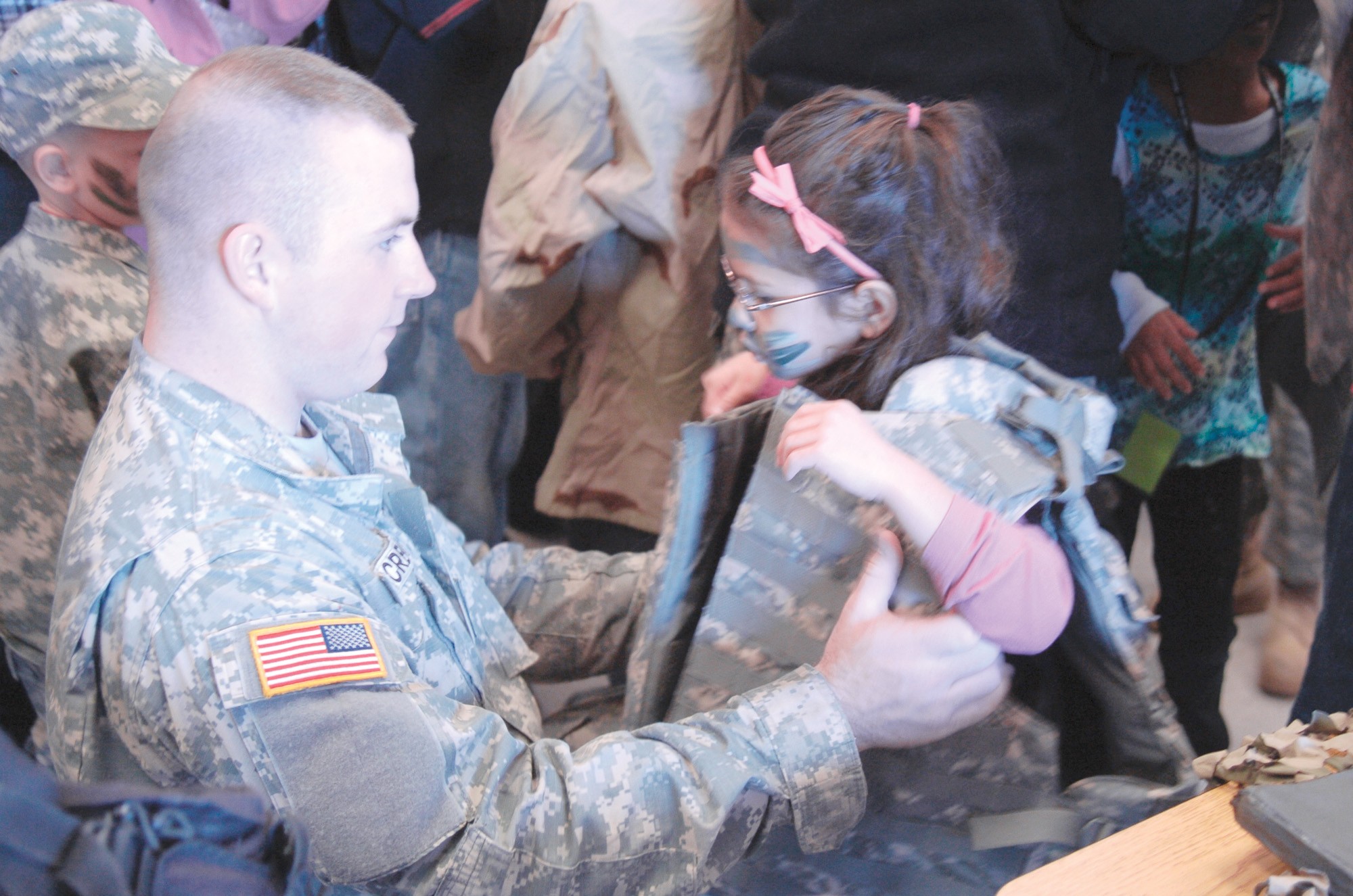
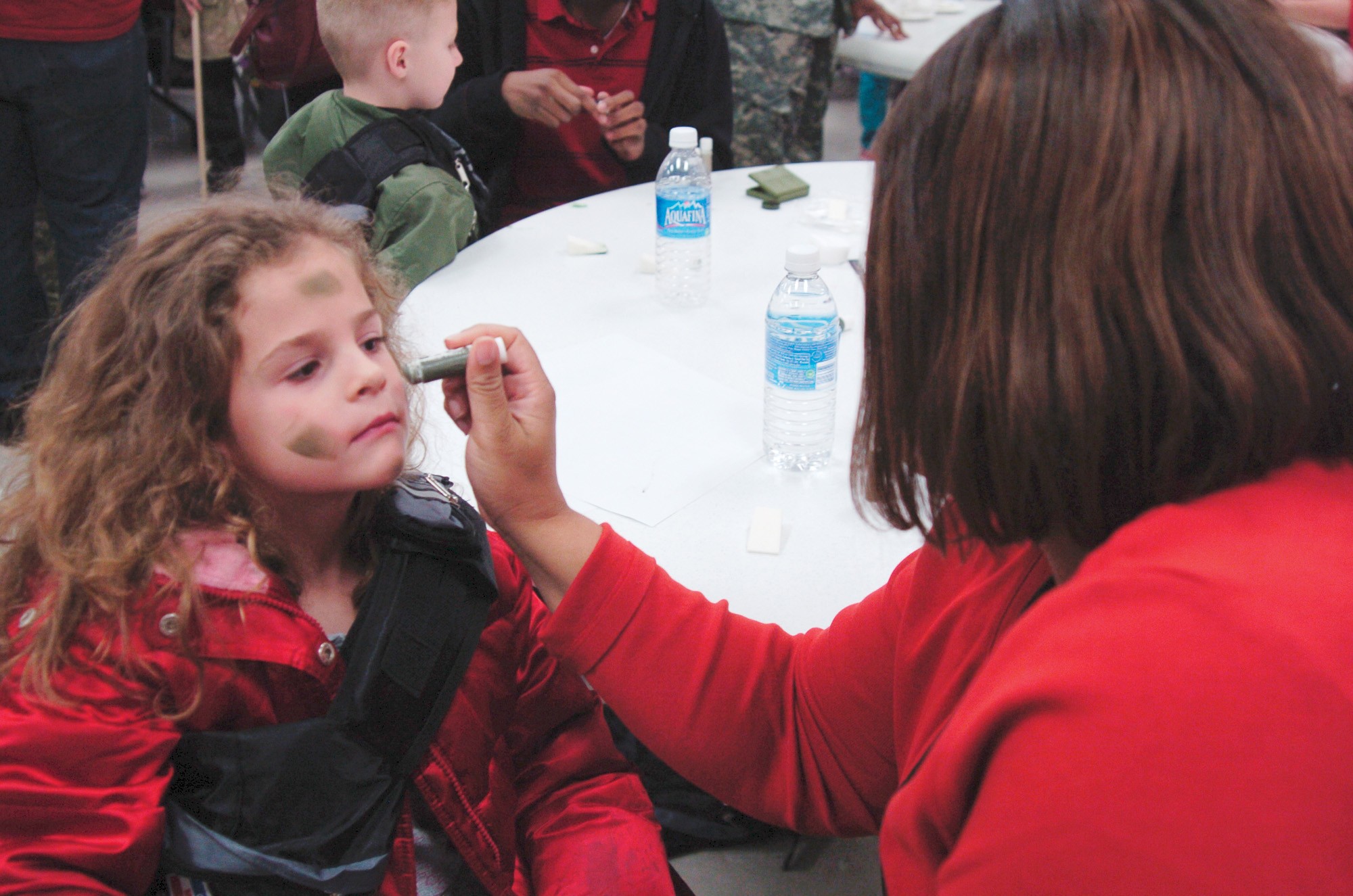
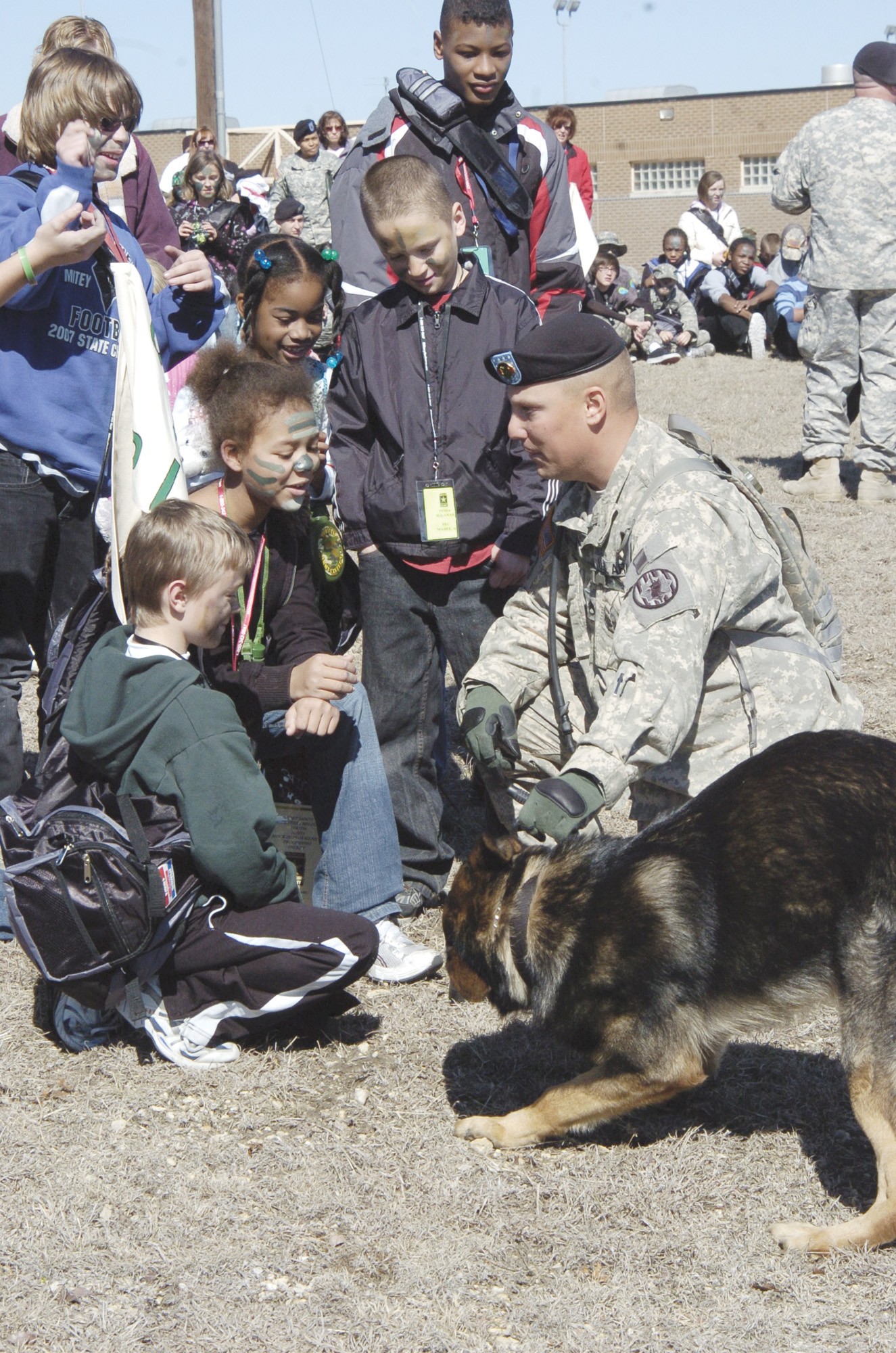
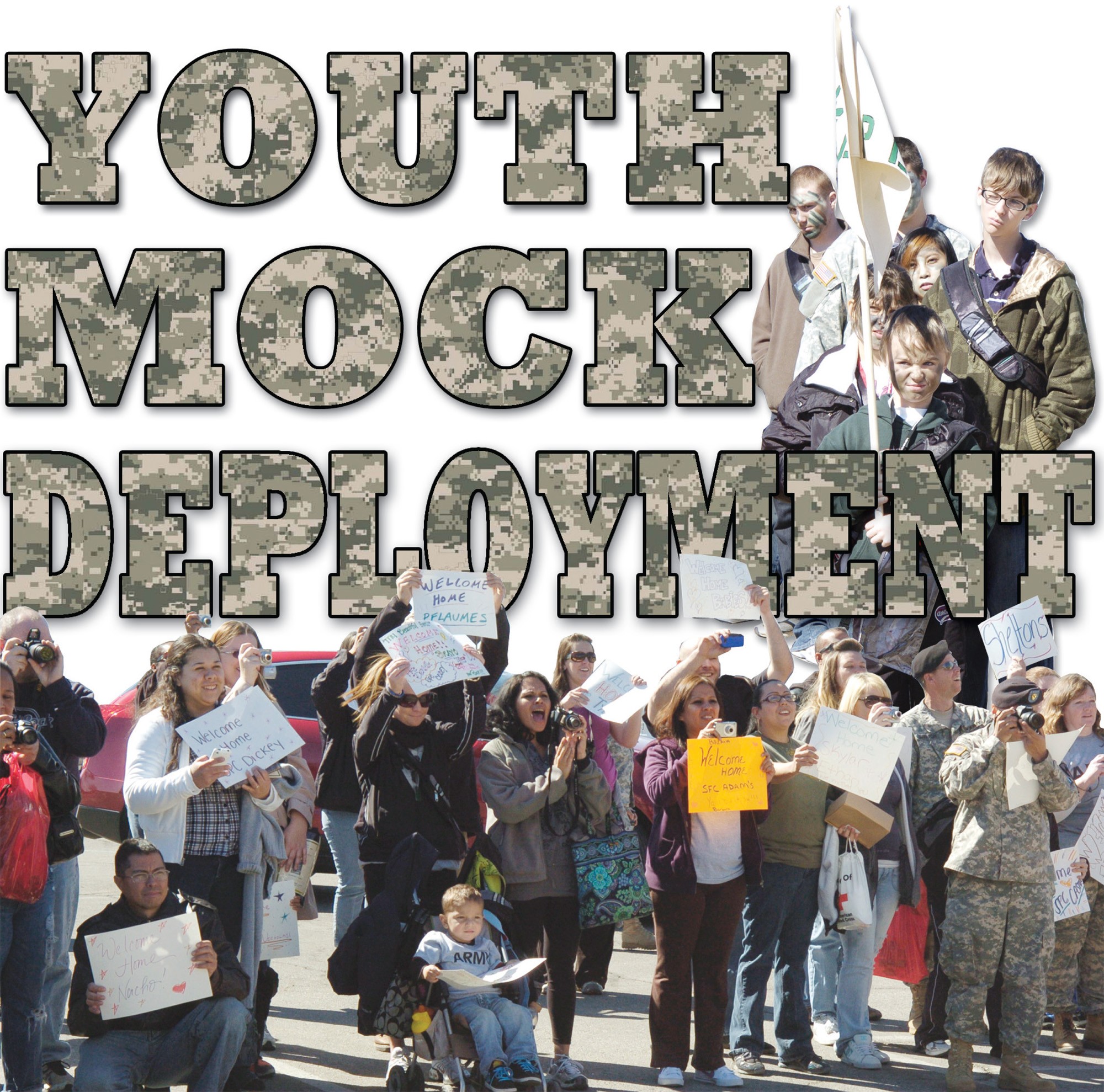
Social Sharing